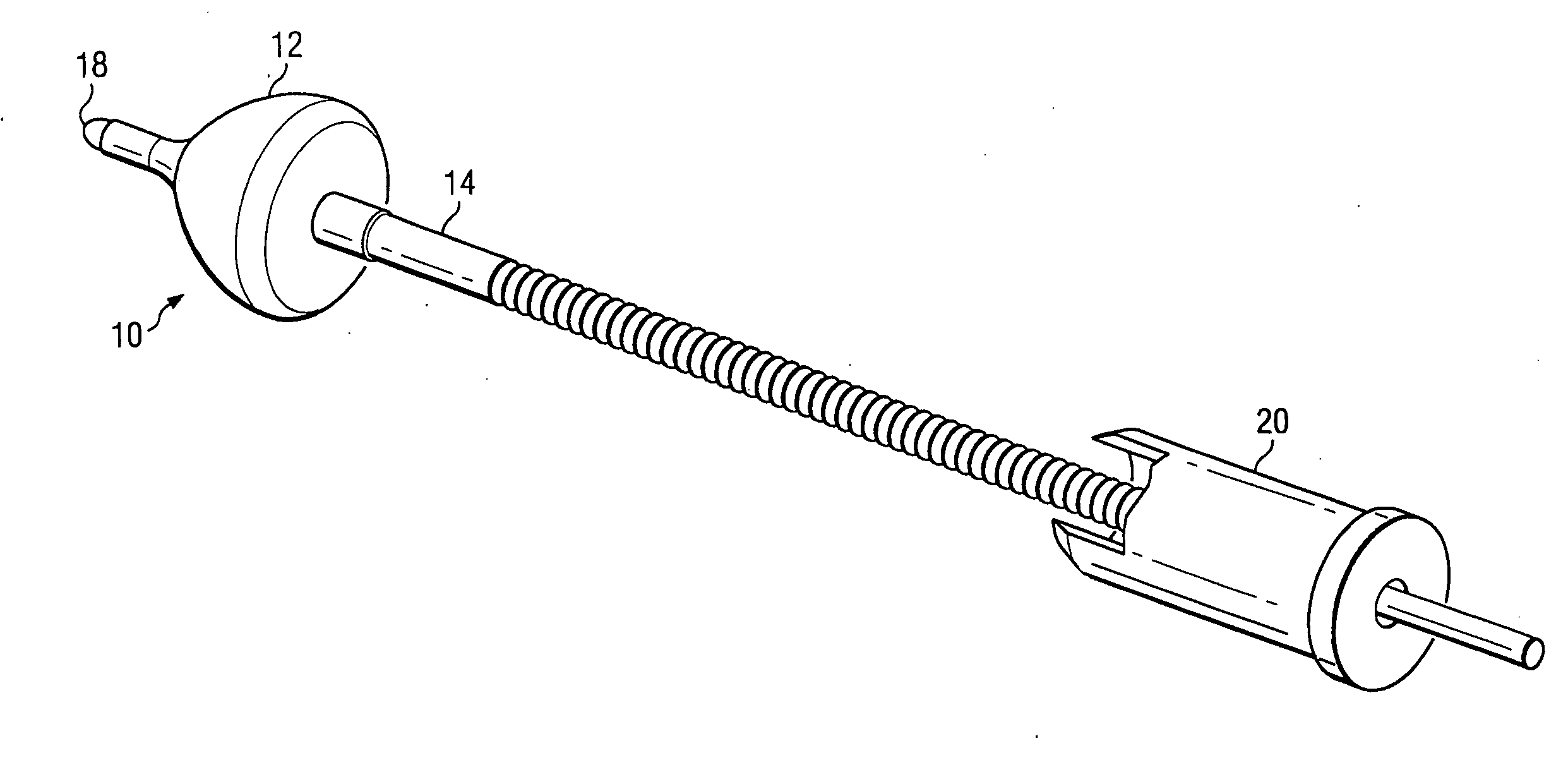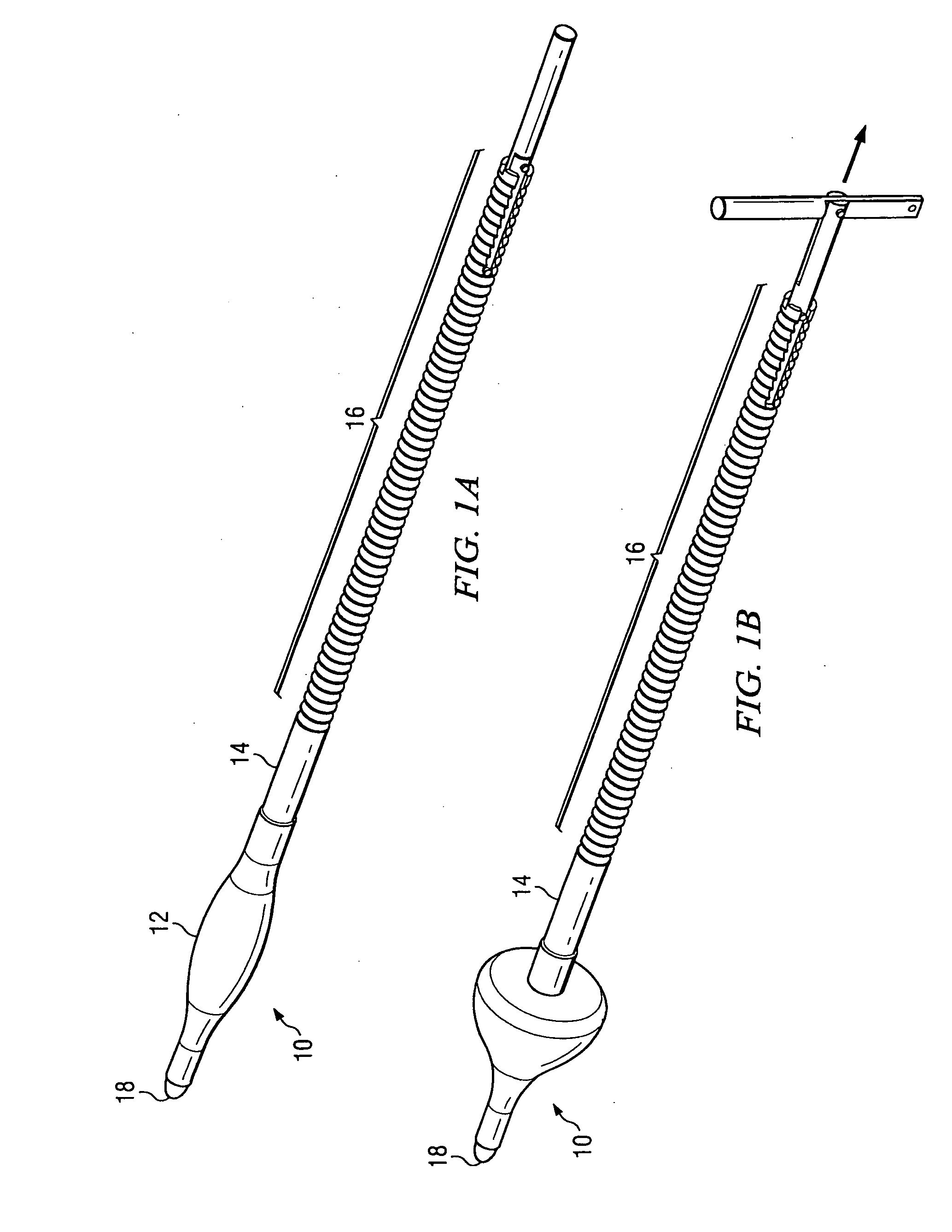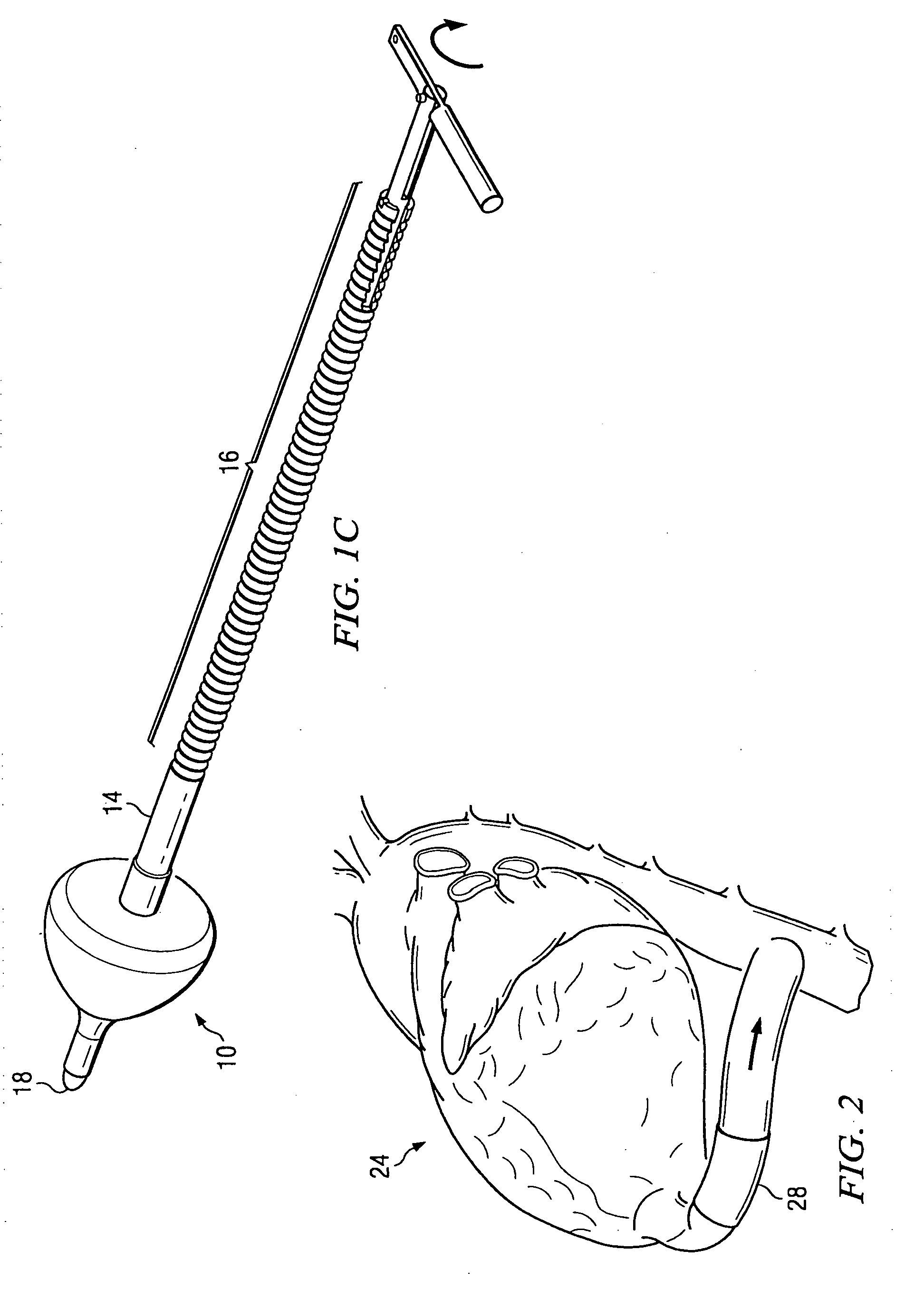System, device, and method for providing access in a cardiovascular environment
a cardiovascular environment and access technology, applied in the field of cardiovascular and vascular surgery, can solve the problems of inferior valvotomy or commissuromy, pose certain problems for surgeons, other bodily injuries, etc., and achieve the effects of enhancing the effect of the operation, superior control, management and performance, and high precision
- Summary
- Abstract
- Description
- Claims
- Application Information
AI Technical Summary
Benefits of technology
Problems solved by technology
Method used
Image
Examples
Embodiment Construction
[0022]FIGS. 1A, 1B, and 1C are simplified schematic diagrams that illustrate a device 10 for creating an effective point of entry at a targeted location. In one embodiment, the targeted location is the apex of the heart. However, the targeted location can be any other suitable location in the body in which a small piece of tissue is sought to be removed by a surgeon or where a sealed access to a fluid or gas containing organ is desired. Device 10 includes an expandable element 12 (which is umbrella shaped in one embodiment) and a rod 14, which includes a threaded portion 16. Device 10 also includes an obturator 18, which is olive shaped and which facilitates a smooth streamlined entry for the attending surgeon. In one embodiment, obturator 18 is blunt at its end such that it does not pierce a valve (or other delicate structure) that may be subsequently placed, removed, burned, ablated, or manipulated by the surgeon. Obturator 18 does have enough sharpness or rigidity such that it ac...
PUM
 Login to View More
Login to View More Abstract
Description
Claims
Application Information
 Login to View More
Login to View More - R&D
- Intellectual Property
- Life Sciences
- Materials
- Tech Scout
- Unparalleled Data Quality
- Higher Quality Content
- 60% Fewer Hallucinations
Browse by: Latest US Patents, China's latest patents, Technical Efficacy Thesaurus, Application Domain, Technology Topic, Popular Technical Reports.
© 2025 PatSnap. All rights reserved.Legal|Privacy policy|Modern Slavery Act Transparency Statement|Sitemap|About US| Contact US: help@patsnap.com



